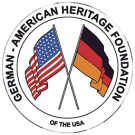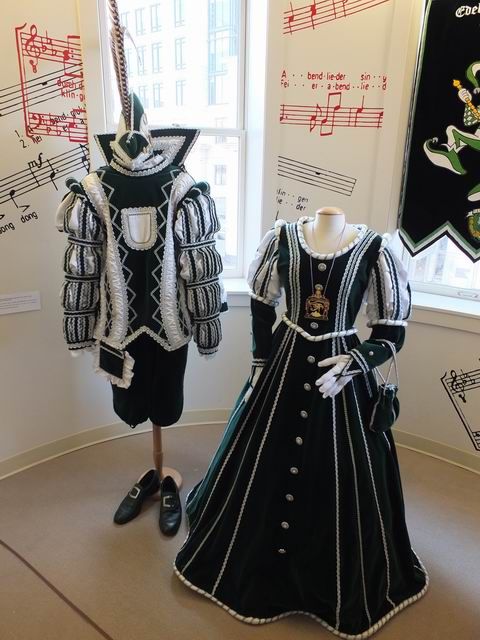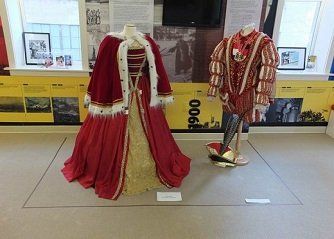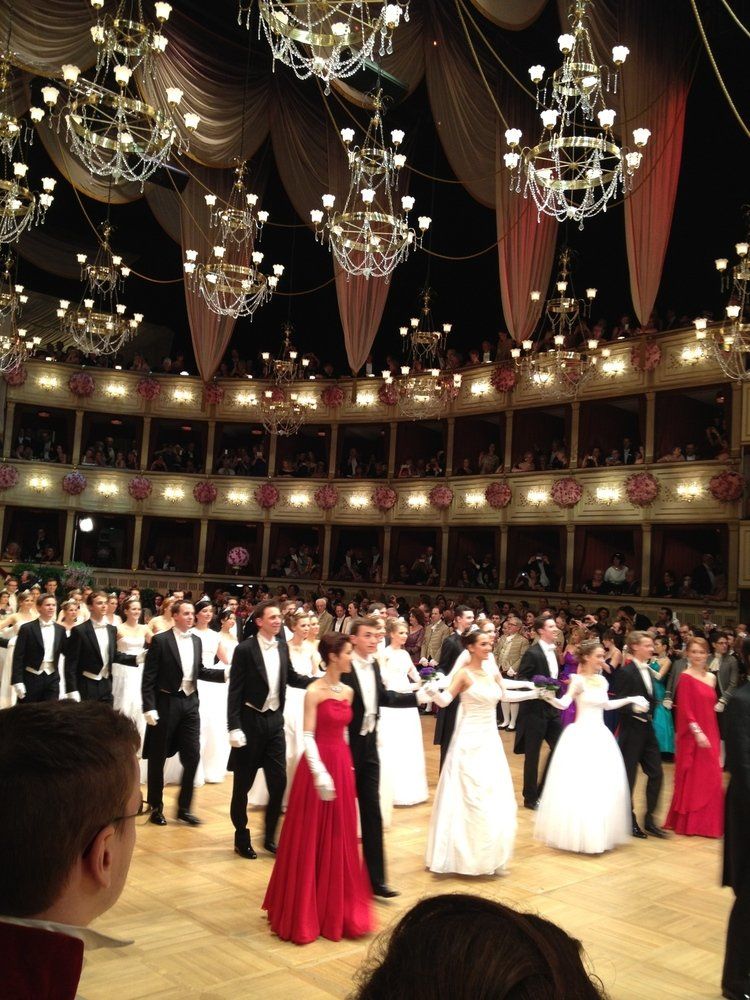German-American Heritage Museum of the USA™

Follow us



February – April 2014
German Karneval — Then & Now
German Karneval: Then and Now was part history and part costume exhibit. It began with a number of panels on Carnival’s origins, explaining in detail its pagan roots and how the holiday was later incorporated into Catholicism during the Middle Ages. The exhibit also covered regional differences of the celebration at great length with an audio-visual information kiosk. A panel on Rhenish Carnival outlined the cultural traditions of Cologne, Düsseldorf, and Mainz.
The Rhineland’s distinct version of the “fifth season”, as Carnival is often called, includes a number of elaborate parades that are overseen by official clubs and organizations that date back to the 19th century. One important duty of these clubs is to award the best dressed with a Karnevalsorden, or a medal, while the Prinzenpaar greet celebrators.
We were fortunate enough to receive authentic medals and Prinzenpaar costumes, as well as the elaborate caps worn by the Karneval Festkomitee. These objects further illustrated the Rhineland’s many traditions by providing visitors to the exhibit with a visual component.
The exhibit also featured Carnival’s regional differences by comparing the Rhineland with the Alemannic traditions of southwestern Germany and parts of Switzerland. There, the fifth season is known as Fastnacht or Fastnet. In the Alemannic traditions of the Black Forest, eerie masks, Geltentrommler (=drummers) and witches, who chase out winter spirits, replace the elaborate parades and political satire practiced in the north.
In contrast to those two regions is the Fasching of Bavaria and Austria. There, exclusive balls take place where people show up in white or black tie, like at many of the distinguished Austrian balls.
